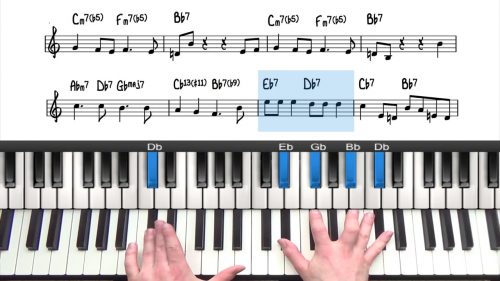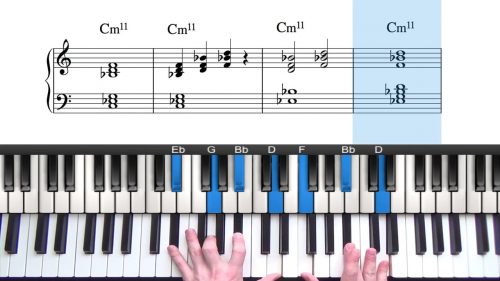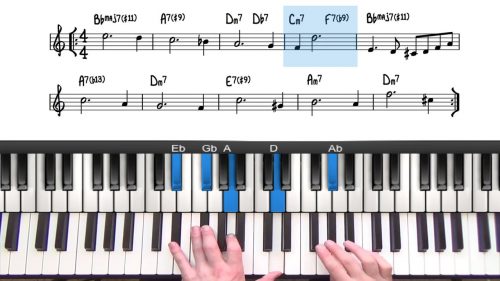Winter Wonderland Tutorial
Welcome to this Christmas jazz standard lesson on the tune “Walking In A Winter Wonderland”. The tune is often played at faster tempos, but for the purpose of this lesson we will approach the arrangement with a ballad feel.
The Form & The Chord Changes
The tune follows an AABA Form, and we are going to play it in the key of Eb Major. To create this arrangement, we have heavily reharmonised the original changes.
The A Sections are fairly simple to play with the repetitive melody and chord changes. The B Section is more harmonically complex and there are also some large interval leaps in the melody which makes it challenging to play in places.
Sus Chords & Suspended Harmony
We apply lots of Sus chords and suspended harmony. Sus chords often have a ‘bright’ and ‘floating’ quality and this makes them well suited to arranging these jolly Christmas numbers.
Upper Structure Triads & Altered Harmony
We explore some interesting applications of upper structure triads and altered harmony. If this theory is new to you, then check out the related lessons below where we discuss the underlying theory in detail.
Practice Tips
-
The A Section repeats 3 times and so we will look at ways that we can add interest and variety to the repetitive chord changes.
-
Play the melody of the Bridge slowly so that you have the large leaps firmly under your fingers.
-
Experiment with the 1625 progression for use as an ending, and also an introduction.
-
In the key of Eb Major, the 1625 progression would be Ebmaj7 / C7b9 / F-7 / Bb7 --> Ebmaj7.
-
Check out the related lessons above for more information on the underlying theory.





I’ve started working on this Jazzy Christmas tune again and I’m so excited – really looking forward to being able to play it on Christmas!!!!! Thanks so much – Always FUN and super inspiring to watch Hayden’s lessons. Yay
Hi Tina 👋
Thanks for the message and I’m glad to hear you are enjoying the Xmas lessons.
I am currently planning some new xmas tutorials and these will be ready later this month.
Cheers, Hayden
Hi Hayden
I love this arrangement you’ve put together here – my favorite I’ve ever heard of Winter Wonderland
I was wondering what lessons you’d suggest of yours to go about including a solo somewhere in the middle of the arrangement and how to build it out Thanks
Hi Collin 👋
Apologies for the delay in my response here.
Yes I am currently recording a course on “cocktail piano improvisation” which will be ready this month. The principles that we cover can be applied to any tune and will work great with the Xmas repertoire.
The new course focuses on the tune “Misty” and all of the demonstrations are in the key of Eb Major . the same key as this arrangement of “Winter Wonderland”.
You will receive an email notification as soon as the new course is ready.
More updates to follow.
Cheers, Hayden
Sounds great – will be looking forward to that lesson being posted!
Thanks so much